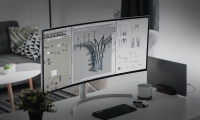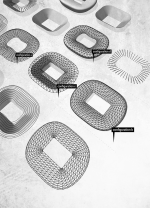Quite often the design of a structure or building is based on a shape imposed by the designer or architect. The structural behaviour and efficiency is only considered in a second phase, in which the geometry is subjected to finite element calculations and in which the results are analysed. If the results are not satisfying, the design is changed iteratively. If design modifications are made in the geometric modelling tools, those changes need to be remodelled as well in the engineering tools, an approach which is time consuming and can lead to errors.
This research explores a new approach for comparing different structural design alternatives based on data visualisations. The aim of the proposed methodology is to be able to focus on structural behaviour and performance without searching for the strict structural optimum. This way non-numeric architectural parameters such as expertise, aesthetics, functionality, constructability etc. can be included as well. By having the information of all different design proposals at hand, the designer is able to make informed design decisions. Data visualisation enriches the design process and the informed decision-making process is facilitated.
For assessing this new design approach in the real design practice, the inkbeagle framework is developed. This framework consists of a web environment and a Grasshopper plugin. The tool allows structural designers to compare design alternatives based on visualisations of structural data. This data is fetched from Karamba3D models, defined in Grasshopper. Graphs are then rendered directly in the web browser.







